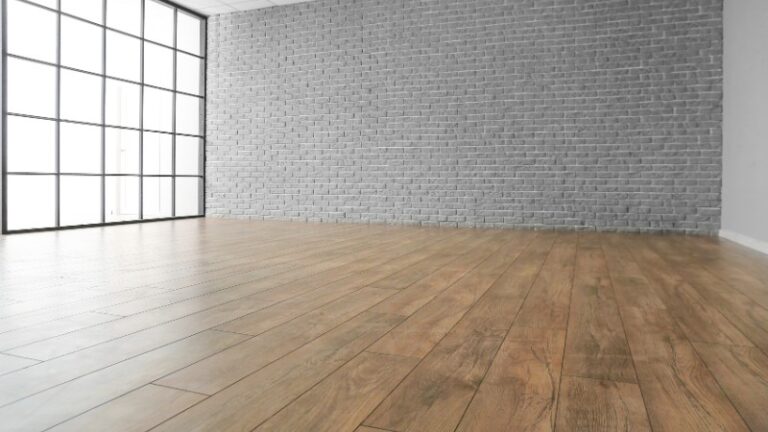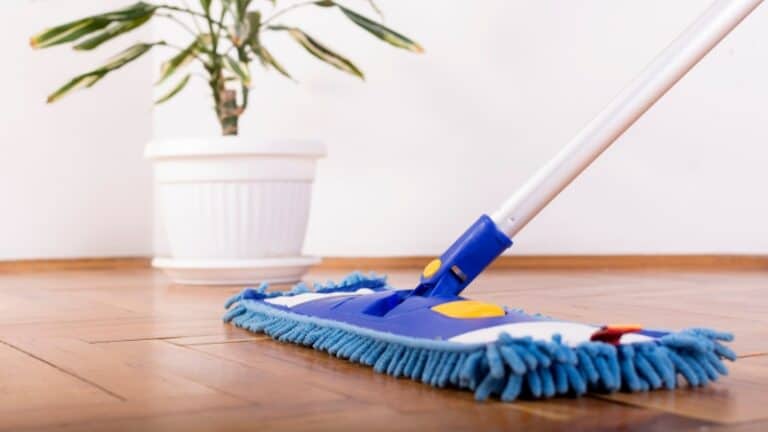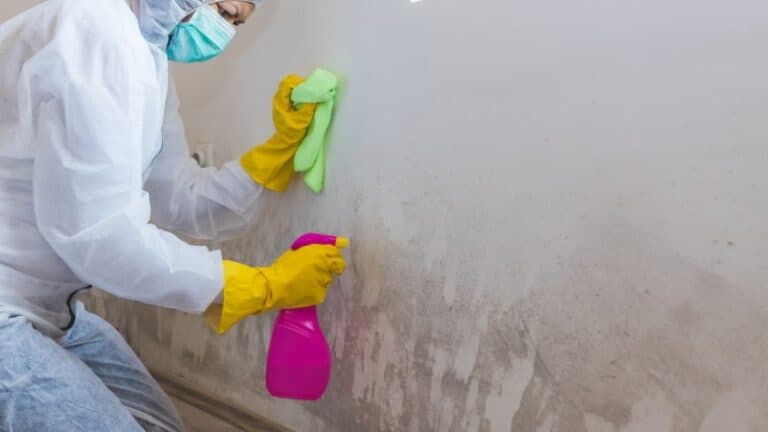You step into your bathroom, expecting a fresh start, but instead, you spot a slimy pink stain creeping along your shower walls or hiding near the drain. That’s pink mold — or more accurately, a bacterial colony called Serratia marcescens.
It’s not a true mold, but it thrives in humid environments, feeding on soap scum, shampoo residue, and even fatty substances left behind after a shower.
While it doesn’t look as menacing as black mold, don’t be fooled. Pink mold carries health risks, especially for those with compromised immune systems or open wounds, and it can cause infections like urinary tract infections if left unchecked. According to health experts, Serratia marcescens is a waterborne bacterium that loves damp corners, making your bathroom an easy target.
Curious how to fight back?
Ahead, we’ll break down the health risks, show you how to get rid of pink mold for good, and share easy tips to prevent it from making a comeback.
Content
- 1 Is Pink Mold Harmful?
- 2 Where Pink Mold Commonly Grows in Your Home?
- 2.1 Pink Mold in the Shower and Bathtub
- 2.2 Pink Mold in Bathroom Sinks and Faucets
- 2.3 Pink Mold in Toilets and Toilet Tanks
- 2.4 Pink Mold in Kitchen Sinks and Drains
- 2.5 Pink Mold in Refrigerators and Food Storage Areas
- 2.6 Pink Mold in Basements and Laundry Rooms
- 2.7 Pink Mold in Window Tracks and Sills
- 3 7 Ways to Get Rid of Pink Mold Quickly
- 3.1 1. Call Modern Maids for Professional Deep Cleaning
- 3.2 2. Clean Surfaces with White Vinegar
- 3.3 3. Use Hydrogen Peroxide to Disinfect Moldy Areas
- 3.4 4. Scrub with Baking Soda Paste
- 3.5 5. Apply Commercial Mold and Mildew Cleaners
- 3.6 6. Improve Ventilation by Installing an Exhaust Fan or Dehumidifier
- 3.7 7. Regular Maintenance and Dry Surfaces After Use
- 4 Keep Pink Mold Out of Your Home for Good
Is Pink Mold Harmful?
At first glance, pink mold might seem more annoying than dangerous.
It doesn’t carry the same reputation as black mold, but don’t let its softer appearance fool you — pink mold still poses real health risks, especially for people with compromised immune systems, the elderly, and young children.
Exposure to pink mold can lead to a range of issues. Some people experience mild respiratory problems like coughing, sneezing, or wheezing after spending time around pink mold growth.
Others might face more serious concerns, including urinary tract infections — a common complication when the bacteria behind pink mold, gets out of control. If you have an open wound, even casual contact with contaminated surfaces could trigger infections that are slow to heal, making it crucial to get rid of pink mold promptly .
In hospitals, Serratia marcescens has been linked to healthcare-associated infections and shows a surprising resistance to some common disinfectants, making it a tough opponent if left unchecked.
While healthy people might only experience minor irritation or worsening of existing allergies, repeated exposure is never a good idea. Even touching or inhaling tiny spores from shower walls or other damp areas can quietly escalate into more significant problems.
It’s important to remember that not everyone who comes across pink mold will get sick, but taking steps to prevent pink mold is wise .
Still, if you notice symptoms like persistent coughing, skin irritation, or any unusual infections, it’s smart to consult a doctor to rule out other causes and get proper treatment, and make sure to wash your hands frequently .
Where Pink Mold Commonly Grows in Your Home?

Ever wondered why pink stains seem to pop up in the same few places over and over again?
It’s not random — pink mold thrives in warm, damp spaces where moisture lingers and surfaces don’t dry properly.
Whether it’s the bathroom, kitchen, or even forgotten corners of the basement, certain spots in your home are practically calling out to it.
Let’s walk through where you’re most likely to find pink mold setting up camp:
Pink Mold in the Shower and Bathtub
Few places are more inviting to pink mold than a steamy shower or a damp bathtub. All that moisture combined with soap residue and warm air creates an open invitation.
If you’ve ever spotted slimy pink streaks along grout lines or tucked into the corners of your shower walls, you’re seeing exactly how quickly pink mold growth can take hold.
Pink Mold in Bathroom Sinks and Faucets
After brushing your teeth or washing your hands, tiny splashes of water often collect around the sink and faucet base.
Over time, that lingering dampness becomes a playground for pink mold. Even if the surfaces look clean at a glance, If you don’t keep surfaces dry, moisture hiding under faucet handles can allow a bacterial colony to flourish without much warning.
Pink Mold in Toilets and Toilet Tanks
Toilets are another favorite hangout.
Pink mold often clings to the bowl rim or hides inside the toilet tank, especially if the bathroom stays humid after hot showers.
One common example is the pinkish ring that forms in a toilet after just a few days without cleaning, showing how rapidly pink mold can thrive.
Pink Mold in Kitchen Sinks and Drains
The kitchen may seem like a surprising place for pink mold, but sinks and drains offer everything it needs — standing water, food particles, and warmth from dishwashing. Ever caught a glimpse of a slimy pink patch near your sink strainer or in a dish drying rack?
That’s pink mold making itself at home among the leftover crumbs and soap scum.
Pink Mold in Refrigerators and Food Storage Areas
Leftovers forgotten in the back of the fridge aren’t just bad news for dinner plans — they can also attract pink mold. Moisture trapped in crisper drawers or poorly ventilated storage compartments becomes a breeding ground.
If you’ve ever pulled out a produce bin to find a pinkish film on the bottom, that’s a sure sign it’s time for a deep clean.
Pink Mold in Basements and Laundry Rooms
Basements and laundry rooms often suffer from poor ventilation and lingering dampness.
Pink mold can show up around washing machine seals, near water heaters, or even along unfinished basement walls. If your laundry room smells musty or you see pink patches near pipes, you’re witnessing firsthand how humid environments can encourage mold growth.
Pink Mold in Window Tracks and Sills
Ever noticed condensation pooling along your windows after a chilly night? If those window tracks stay wet, pink mold can move in fast. Dust, organic matter, and moisture team up to give pink mold the perfect place to settle.
Regularly cleaning and drying window sills can help, but if left unchecked, those tiny pink streaks will keep coming back.
7 Ways to Get Rid of Pink Mold Quickly
When pink mold decides to settle into your home, it doesn’t just sit quietly — it spreads fast, clinging to every damp surface it can find.
Tackling it head-on with the right methods can make all the difference between a spotless bathroom and a constant battle.
Let’s start with the best move you can make:
1. Call Modern Maids for Professional Deep Cleaning

Sometimes, no matter how many times you scrub, pink mold keeps making a comeback — especially in hard-to-reach spots like grout lines, shower drains, and behind bathroom fixtures.
Despite your best efforts scrubbing over the weekend, the quick return of slimy pink patches by Monday shows that DIY solutions often fall short, despite the elbow grease invested .
That’s where Modern Maids steps in.
Our deep cleaning services are designed specifically for mold-prone areas like showers, tiles, sinks, and grout. Using industrial-grade disinfectants and specialized cleaning solutions, they not only remove visible pink mold but target the bacterial colony at its source, helping prevent future pink mold growth.
Plus, we reach the sneaky corners that often get missed during regular cleaning — like the underside of faucet bases or the tight spots behind toilet tanks.
If pink mold keeps coming back despite your best efforts, Modern Maids can help restore your home to a fresh, healthy space.
When you’re ready to kick bacteria to the curb and enjoy a sparkling clean home again, professional help is just a call away.
2. Clean Surfaces with White Vinegar
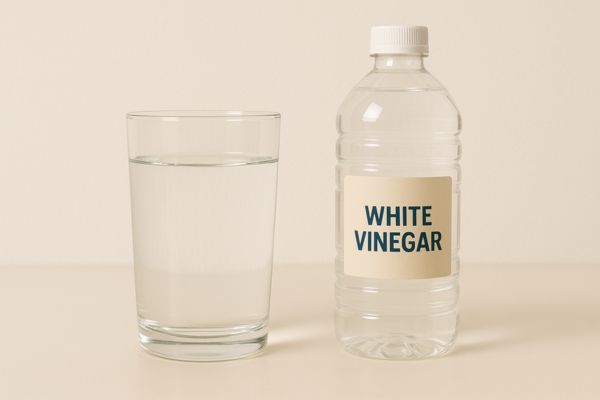
Your pantry holds more cleaning power than you might think — that humble bottle of white vinegar isn’t just for cooking.
It doubles as a natural, non-toxic mold fighter that’s perfect for tackling pink mold around your home.
Simply pour undiluted white vinegar into a spray bottle and generously coat shower walls, tiles, and sink surfaces where pink mold tends to camp out.
Let it sit undisturbed for at least 10 minutes, giving it time to eat away at the bacterial colony clinging to all those damp, hard surfaces.
After the wait, grab a microfiber cloth or sponge and get scrubbing. You’ll start noticing the pink grime lifting easily — like it was never stubborn in the first place.
Vinegar’s antibacterial properties quietly do the heavy lifting without the harshness of chemical cleaners, making it a safe choice for homes buzzing with kids, pets, or anyone with sensitivities, unlike a bleach solution .
Want to stay ahead of future mold growth?
Once everything’s dry, adding a few drops of tea tree oil to the cleaned surfaces offers extra insurance — and leaves behind a refreshing scent. Plus, getting into the habit of giving your bathroom a quick vinegar spray-down once a week can keep pink mold from even thinking about moving back in.
3. Use Hydrogen Peroxide to Disinfect Moldy Areas
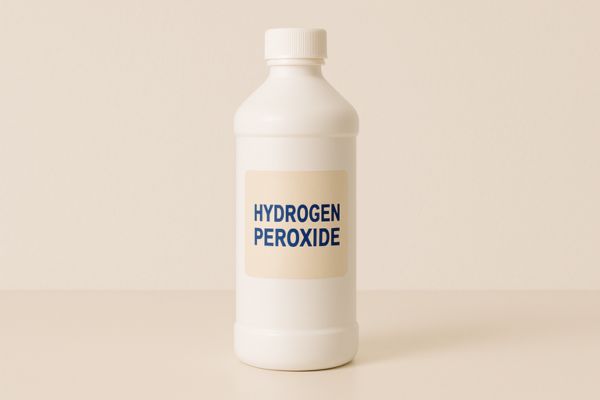
When pink mold leaves behind those stubborn stains that vinegar just won’t budge, it’s time to call in a slightly stronger ally: hydrogen peroxide.
Found in almost every first-aid kit, this common household item isn’t just for cuts and scrapes — it’s a secret weapon for blasting away mold and bacteria.
Spray a 3% hydrogen peroxide solution directly onto the affected area, whether it’s your shower walls, bathroom windows, or around the sink.
Let it sit for 15 to 20 minutes, allowing the bubbling action to get deep into the surface and break apart the slimy pink buildup.
Research shows that hydrogen peroxide can wipe out up to 99% of surface bacteria, making it a powerhouse you definitely want in your cleaning arsenal.
Once the wait time is up, gently scrub the area to lift any remaining pink stains, then rinse with clean water. Not only does hydrogen peroxide disinfect the surface, but its mild bleaching effect helps brighten grout lines and tiles, making your bathroom look fresher instantly.
It’s a simple step that can make a noticeable difference — especially if you’re tired of seeing pink patches creeping back no matter how often you clean.
4. Scrub with Baking Soda Paste
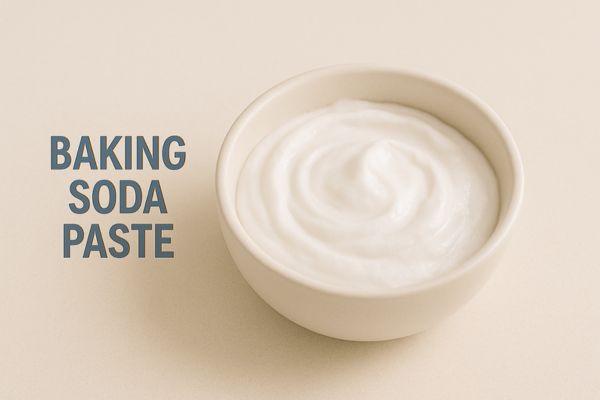
Not every cleaning battle needs heavy-duty chemicals — sometimes, the simplest ingredients pack the biggest punch.
Baking soda, the classic kitchen staple, pulls double duty when it comes to tackling pink mold without damaging your surfaces.
Mix baking soda with a little water to create a thick, gritty paste, then spread it over the slimy pink stains around your shower walls, sink edges, or even bathroom windows. Grab a soft-bristled brush and gently scrub the area.
Thanks to baking soda’s natural abrasive texture, stubborn pink mold lifts away without scratching tiles, grout, or other hard surfaces.
There’s more going on beneath the surface too — baking soda’s alkaline nature shifts the environment, making it harder for pink mold to thrive again.
By scrubbing and neutralizing at the same time, you’re giving your bathroom a deeper, longer-lasting clean.
Finish off by rinsing thoroughly with clean water, leaving the space fresh, smooth, and noticeably brighter — without a single harsh chemical in sight.
5. Apply Commercial Mold and Mildew Cleaners
Sometimes pink mold puts up a fight that your pantry ingredients just can’t win — and that’s when it’s time to bring out the big guns.
Commercial mold and mildew cleaners are specifically formulated to tackle the kind of stubborn buildup that loves to hide in tile grout, bathtub edges, and bathroom walls.
Before you start, suit up properly: gloves and a mask are a must to protect your skin and lungs. Flip on the bathroom fan or open windows to keep the area well ventilated.
Once you’re ready, spray the cleaner directly onto the affected surfaces and follow the manufacturer’s instructions to the letter — skipping steps could reduce its effectiveness.
For best results, choose products that are EPA-approved for bacterial control. These cleaners are designed to not only remove visible pink mold but also to kill the bacteria at the root, helping stop pink mold from making another unwelcome appearance.
A good example?
After a particularly humid summer, many homeowners find that regular sprays don’t quite cut it, especially along shower walls and around bathroom windows where moisture loves to cling.
In those cases, a commercial mildew remover can make all the difference, restoring your bathroom to a fresh, healthy space without endless scrubbing.
6. Improve Ventilation by Installing an Exhaust Fan or Dehumidifier

Ever feel like your bathroom turns into a mini rainforest after every shower?
That steamy air might seem harmless, but it’s actually creating the perfect hideout for pink mold. Moisture that lingers on wet surfaces like shower walls, tiles, and even bathroom windows gives bacteria all it needs to thrive.
The easiest way to outsmart pink mold?
Improve airflow. Installing an exhaust fan in your bathroom or other high-moisture areas can help whisk away that damp air before it settles into your surfaces.
No construction plans in the works?
A dehumidifier is a smart backup option — keeping indoor humidity levels below 50% is a proven way to dramatically lower the chances of mold and bacterial growth, according to studies on indoor air quality.
If you’ve ever noticed your mirror staying fogged up long after a hot shower, that’s your clue. Without proper ventilation, moisture seeps into grout, behind shower curtains, and around window tracks, setting the stage for pink mold growth.
By ensuring your space stays dry and well-ventilated, you make it much harder for bacteria to put down roots again.
7. Regular Maintenance and Dry Surfaces After Use
There’s no secret trick or magic spray that keeps pink mold away forever — staying ahead of it takes a little old-fashioned consistency.
Think of your bathroom like a high-maintenance houseguest: the more attention you give it, the less trouble it causes.
After every shower or heavy water use, take a minute to wipe down shower walls, glass doors, and tiles. It sounds simple, but drying wet surfaces immediately is one of the most powerful ways to stop pink mold growth in its tracks.
Bacteria love damp corners, and every drop of lingering moisture is practically an invitation to move in.
Incorporating regular cleaning into your routine makes a huge difference too. A weekly scrub with anti-mold sprays or even a quick vinegar solution can help keep bacteria at bay.
Pay special attention to clearing soap scum — that cloudy film on your shower walls and grout isn’t just unsightly; it’s packed with fatty substances and body oils that serve as a buffet for mold and bacteria.
Imagine this: wiping down your shower for 60 seconds after each use could save you hours of deep scrubbing later. Staying proactive keeps your bathroom looking spotless — and far less inviting to anything pink, slimy, or unwanted.
Keep Pink Mold Out of Your Home for Good
Pink mold might wear a softer color, but don’t let that fool you — it can still cause serious trouble if left to grow unchecked. While it may not be as intimidating as black mold, ignoring pink mold could lead to damaged surfaces and unexpected health risks over time.
The good news?
A little consistency goes a long way. By combining smart cleaning habits, proper ventilation, and regularly drying wet surfaces, you can help prevent pink mold from ever settling in. And if pink mold has already staked its claim, no stress. Modern Maids is ready to help you take your space back.
Let us scrub away the slimy pink invaders and restore a fresh, healthy shine to your home.
Call Modern Maids today at (469)-430-8860, or book your deep cleaning service online at modern-maids.com/booking-page.
Say goodbye to pink mold — and hello to a home that sparkles with every step you take.




